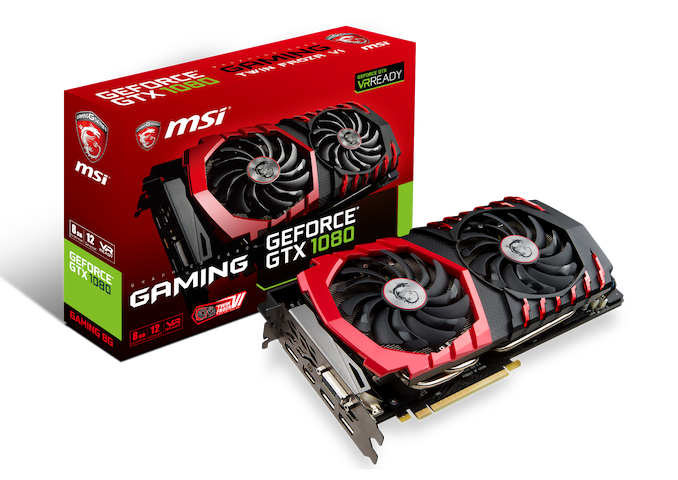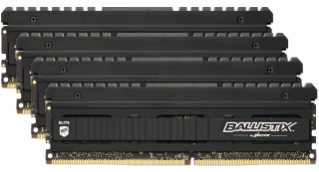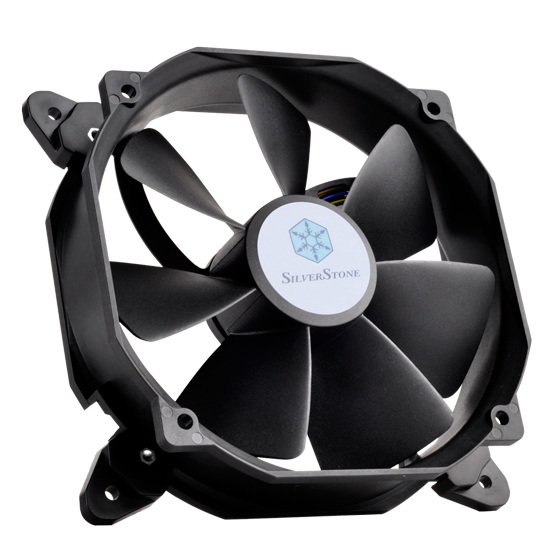The Supermicro X11SPA-T Review: An Impressive Cascade Lake Workstation Motherboard
by Gavin Bonshor on January 24, 2020 9:00 AM ESTBoard Features
The Supermicro X11SPA-T is an E-ATX sized model which is designed to be used with Intel's Xeon W-3200 and the Xeon Scalable processor family. Based on Intel's C621 chipset, it comes with a variety of core features including seven full-length PCIe 3.0 slots with four operating at x16, and another three at x8. On the storage front is four PCIe 3.0 x4 slots which include support for VROC, and eight SATA ports which allow users to build RAID 0, 1, 5, and 10 arrays. Going for a more conventional route in the networking department, the Supermicro X11SPA-T has three Ethernet ports that are controlled by individual controllers. An Aquantia AQC107 10 G Ethernet controller spearheads this, with a secondary Intel I210-AT Gigabit controller, and a Realtek RTL8211E PHY controller which is dedicated to the boards IPMI. There are twelve memory slots that support both LRDIMM and RDIMM ECC DDR4 memory; this particular platform supports hex-channel memory.
| Supermicro X11SPA-T EATX Motherboard | |||
| Warranty Period | 3 Years | ||
| Product Page | Link | ||
| Price | $650 | ||
| Size | EATX | ||
| CPU Interface | LGA3647 | ||
| Chipset | Intel C621 | ||
| Memory Slots (DDR4) | Twelve DDR4 Supporting 3TB 3DS ECC LRDIMM/RDIMM Hex Channel Up to DDR4-2933 |
||
| Video Outputs | 1 x D-Sub (IPMI) | ||
| Network Connectivity | Intel I210-AT Gigabit Aquantia AQC107 10 Gigabit Realtek RTL8211E PHY (IPMI) |
||
| Onboard Audio | Realtek ALC888 | ||
| PCIe Slots for Graphics (from CPU) | 7 x PCIe 3.0 x16 - x16/x0/x16/x0/x16/x0/x16) - x16/x8/x8/x8/x8/x8/x8 |
||
| PCIe Slots for Other (from PCH) | N/A | ||
| Onboard SATA | Eight, RAID 0/1/5/10 | ||
| Onboard M.2 | 4 x PCIe 3.0 x4/SATA | ||
| Onboard U.2 | N/A | ||
| USB 3.1 (10 Gbps) | 1 x Type-A Rear Panel 1 x Type-C Rear Panel |
||
| USB 3.0 (5 Gbps) | 4 x Type-A Rear Panel 1 x Header (two ports) |
||
| USB 2.0 | 1 x Header (two ports) | ||
| Power Connectors | 1 x 24-pin ATX 2 x 8pin CPU |
||
| Fan Headers | 2 x CPU (4-pin) 1 x Water Cooler power connector (4-pin 8 x System (4-pin) |
||
| IO Panel | 1 x USB 3.1 Gen2 Type-A 1 x USB 3.1 Gen2 Type-C 4 x USB 3.1 Gen1 Type-A 3 x Network RJ45 (Intel, Aquantia, Realtek) 1 x D-Sub (IPMI) 5 x 3.5mm Audio Jacks (Realtek) 1 x S/PDIF Output (Realtek) 1 x Serial Port |
||
As expected with a premium model on a high-end professional chipset, the single socketed Supermicro X11SPA-T has plenty of cooling options with a total of ten 4-pin headers. To assist the boards ASPEED AST2500 IPMI management controller, the rear panel includes a D-sub video output. Also on the rear panel is a single USB 3.1 G2 Type-A, one USB 3.1 G2 Type-C, and four USB 3.1 G1 Type-A ports. The five 3.5 mm audio jacks and S/PDIF optical output are powered by a Realtek ALC888 HD audio codec, which isn't high-end by any measure, but it's more than the norm for a board aimed at professional use case scenarios.
Test Bed
As per our testing policy, we take a high-end CPU suitable for the motherboard that was released during the socket’s initial launch, and equip the system with a suitable amount of memory running at the processor maximum supported frequency. This is also typically run at JEDEC subtimings where possible. It is noted that some users are not keen on this policy, stating that sometimes the maximum supported frequency is quite low, or faster memory is available at a similar price, or that the JEDEC speeds can be prohibitive for performance. While these comments make sense, ultimately very few users apply memory profiles (either XMP or other) as they require interaction with the BIOS, and most users will fall back on JEDEC supported speeds - this includes home users as well as industry who might want to shave off a cent or two from the cost or stay within the margins set by the manufacturer. Where possible, we will extend out testing to include faster memory modules either at the same time as the review or a later date.
To utilize the C246 chipset and for the Supermicro X11SCA-W review specifically, we used an Intel Xeon E-2186G processor which has similar specifications to the Core i7-8700K; the Xeon E-2186 has a 100 MHz increase on the base frequency, while the turbo clocks remain the same across both processors (4.7 GHz).
| Test Setup | |||
| Processor | Intel Xeon W-3235 180W, $1398, 12 Cores, 24 Threads, 3.3 GHz (4.4 GHz Turbo) |
||
| Motherboard | Supermicro X11SCA-W | ||
| Cooling | Noctua U14S DX-3647 | ||
| Power Supply | Thermaltake Toughpower Grand 1200W Gold PSU | ||
| Memory | 2x16GB Corsair Vengeance LPX DDR4-2400 Ran at DDR4-2666 |
||
| Video Card | ASUS GTX 980 STRIX (1178/1279 Boost) | ||
| Hard Drive | Crucial MX300 1TB | ||
| Case | Open Test Bed | ||
| Operating System | Windows 10 RS3 inc. Spectre/Meltdown Patches | ||
Readers of our motherboard review section will have noted the trend in modern motherboards to implement a form of MultiCore Enhancement / Acceleration / Turbo (read our report here) on their motherboards. This does several things, including better benchmark results at stock settings (not entirely needed if overclocking is an end-user goal) at the expense of heat and temperature. It also gives, in essence, an automatic overclock which may be against what the user wants. Our testing methodology is ‘out-of-the-box’, with the latest public BIOS installed and XMP enabled, and thus subject to the whims of this feature. It is ultimately up to the motherboard manufacturer to take this risk – and manufacturers taking risks in the setup is something they do on every product (think C-state settings, USB priority, DPC Latency / monitoring priority, overriding memory sub-timings at JEDEC). Processor speed change is part of that risk, and ultimately if no overclocking is planned, some motherboards will affect how fast that shiny new processor goes and can be an important factor in the system build.
Many thanks to...
We must thank the following companies for kindly providing hardware for our multiple test beds. Some of this hardware is not in this test bed specifically, but is used in other testing.


















31 Comments
View All Comments
Pneumothorax - Friday, January 24, 2020 - link
I'm sure the profit margin on these is quite a bit less then ridiculously overpriced Z390 & X570 boards named after some deity...Operandi - Friday, January 24, 2020 - link
True for some of them for sure but a lot of the consumer boards that are aimed at the high-end overclocking are the real deal in terms of engineering. Very powerful and efficient VRMs are not cheap and a lot more overbuilt than on something like in this board so the margins are probably not as crazy high as you think (at least in the middle of the Z390 X570 market).airdrifting - Sunday, January 26, 2020 - link
What overclocking are you talking about? Overclocking a 9900K from 4.7GHz stock all core turbo to 5.0GHz and look at 95C loaded temperature, or overclocking Ryzen 0.1GHz past the precision boost? You kids don't know anything about overclocking nowadays.Ironchef3500 - Monday, January 27, 2020 - link
+1brucethemoose - Monday, January 27, 2020 - link
+1There is *a little* headroom in HEDT CPUs, for now...
web2dot0 - Tuesday, February 11, 2020 - link
Still remember those Celeron 300A days OC to 450MhzThe glory days of Overclocking ...
Operandi - Friday, January 24, 2020 - link
I will say the marketing sucks though. I don't give a fuck about an Aorus regardless of how extreme it may be and I really don't want to join a republic, thanks for asking though.GreenReaper - Sunday, January 26, 2020 - link
They're not exactly *asking* - the red-cloaked tide of Gamers have annexed several nearby states. For a while it looked like they'd take the Ministry of Sound, but fortunately Realtek pushed them back.Operandi - Friday, January 24, 2020 - link
Also, these comments are in reverse order cause there isn't a edit button. Oh well.....rahvin - Friday, January 24, 2020 - link
The 570 boards are expensive because they are the first PCIE4 motherboards. That and they needed a 12 layer board to get the pcie trace lengths within the spec limits. As the OEM's get more experience with 4.0 they'll drop in price but the first boards are always going be $$$ because of the additional engineering. You might not remember but the first 3.0 boards were more expensive too.